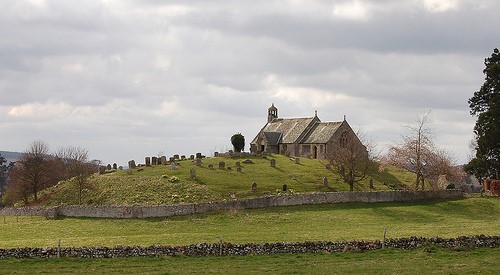The Linton Worm
Introducing the Linton Worm, one of a number of North East legends that inspired our production of the Durham Dragon.
Our society has seen no shortage of apparently mythical monsters: from ‘Nessie’ to Bigfoot to the Beast of Bodmin Moor. But, sadly, some local North-East legends are easily forgotten. One such creature – the Linton Worm – is a mythical beastie whose legend apparently dates from along the Scottish border as far back as the 12th century. The Linton Worm first makes an appearance in a Scots legend in which the writer describes the mythical serpent or dragon as being “In length three Scots yards bigger than an ordinary man’s leg – in form and callour [colour] to our common muir edders [moor adders].”

The story has it that the ‘worm’ used to live on the north-east side of Linton Hill on the Scottish border, in a place known locally as Worm’s Den. Venturing out of its lair, the serpent would terrorize the nearby countryside, destroying most anything in its path – livestock, farmland and locals. No one dared approach the beast or its den, until the story made it to the local laird of Lariston, one William or John de Somerville. Somerville wanted to see the monster for himself, and so went to that place that all others had deserted. Whilst he waited outside the beast’s lair to catch a glimpse, the crafty ‘worm’ caught scent of Somerville’s presence and slithered out after him. Somerville, having seen the great beast with his own eyes, then went to the blacksmith to have a long lance forged with which to slay the dragon.
The laird rose at sunrise the next day and approached the dragon’s den. When the beast came out of its hiding place, Somerville urged his horse forward, shoving his lance — cleverly tipped with a burning peat — into the worm’s mouth, causing a fatal injury. When Somerville returned to the village, the locals rejoiced at the good news, and the hero was promptly knighted and made ‘Barron of Lintoune’.
There is a real line of Lord Somervilles, dating from around 1370-present. James Somerville, 11th Lord of that name, drew up an official family ancestory back in 1679. In its account, King William ‘The Lion’ had made John de Somerville his falconer and baron of Linton back in 1174 for slaying the monstrous worm.

Today, as mentioned previously, the site of the supposed worm’s lair is referred to as Worms Den. This picture is of the Worms Den, now home to Linton Parish, believed to be the home of the monstrous Linton Worm.
